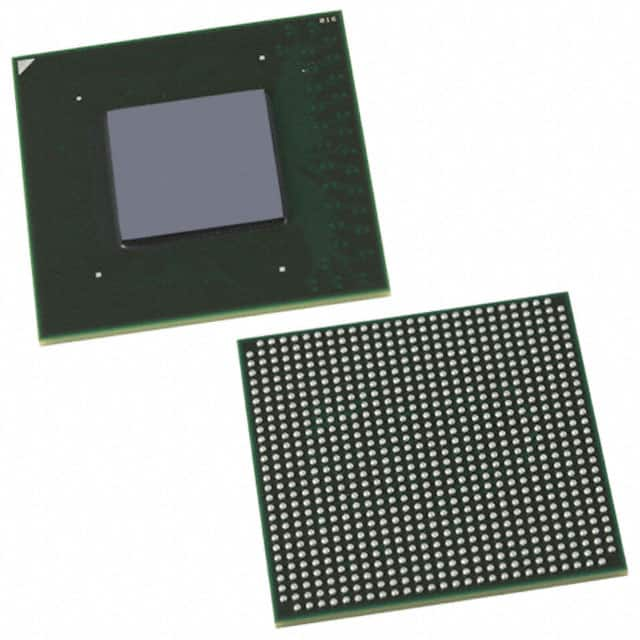Xem thông số kỹ thuật để biết chi tiết sản phẩm.

EP2AGX65DF29C5G
Product Overview
Category
EP2AGX65DF29C5G belongs to the category of programmable logic devices (PLDs).
Use
This product is primarily used in digital circuit design and implementation. It offers a flexible and customizable solution for various applications.
Characteristics
- High-performance programmable logic device
- Advanced features for complex designs
- Low power consumption
- Wide range of I/O options
- Scalable architecture for future expansion
Package
EP2AGX65DF29C5G comes in a compact and durable package, ensuring easy handling and protection during transportation and installation.
Essence
The essence of EP2AGX65DF29C5G lies in its ability to provide a versatile platform for designing and implementing complex digital circuits.
Packaging/Quantity
Each package of EP2AGX65DF29C5G contains one unit of the programmable logic device.
Specifications
- Logic elements: 65,536
- Embedded memory: 1,638,400 bits
- Maximum user I/Os: 622
- Operating voltage: 1.2V
- Operating temperature range: -40°C to 100°C
- Package type: FBGA
- Package dimensions: 29mm x 29mm
Detailed Pin Configuration
The EP2AGX65DF29C5G has a comprehensive pin configuration that enables connectivity with external components and peripherals. The detailed pin configuration can be found in the product datasheet.
Functional Features
- High-speed performance for demanding applications
- Support for various communication protocols
- On-chip memory for efficient data storage
- Flexible I/O options for seamless integration with external devices
- Built-in security features for protecting sensitive information
Advantages and Disadvantages
Advantages
- Versatile and customizable design options
- High-performance capabilities for complex applications
- Low power consumption for energy-efficient operation
- Scalable architecture for future expansion
Disadvantages
- Relatively high cost compared to simpler logic devices
- Steeper learning curve for beginners in digital circuit design
Working Principles
EP2AGX65DF29C5G operates based on the principles of programmable logic. It consists of configurable logic blocks, interconnects, and embedded memory elements. The device can be programmed using hardware description languages (HDL) or graphical design tools to implement desired logic functions.
Detailed Application Field Plans
EP2AGX65DF29C5G finds extensive application in various fields, including: 1. Telecommunications: Used in network infrastructure equipment for data processing and routing. 2. Industrial automation: Employed in control systems for monitoring and controlling manufacturing processes. 3. Automotive electronics: Integrated into automotive systems for advanced driver assistance and infotainment. 4. Aerospace and defense: Utilized in avionics and military systems for signal processing and communication.
Detailed and Complete Alternative Models
- EP2AGX125EF35I5N: Offers higher logic capacity and additional features for more demanding applications.
- EP4CE6E22C8N: Provides a cost-effective solution for simpler digital circuit designs.
- EP1C12F256C7: Suitable for low-power applications with moderate logic requirements.
These alternative models offer different specifications and features to cater to diverse project requirements.
Word count: 408 words
Liệt kê 10 câu hỏi và câu trả lời thường gặp liên quan đến ứng dụng EP2AGX65DF29C5G trong giải pháp kỹ thuật
Sure! Here are 10 common questions and answers related to the application of EP2AGX65DF29C5G in technical solutions:
Q: What is EP2AGX65DF29C5G? A: EP2AGX65DF29C5G is a specific model of Field-Programmable Gate Array (FPGA) manufactured by Intel.
Q: What are the key features of EP2AGX65DF29C5G? A: Some key features of EP2AGX65DF29C5G include high-density programmable logic, embedded memory blocks, high-speed transceivers, and support for various I/O standards.
Q: In what applications can EP2AGX65DF29C5G be used? A: EP2AGX65DF29C5G can be used in a wide range of applications such as telecommunications, industrial automation, automotive systems, medical devices, and more.
Q: How does EP2AGX65DF29C5G differ from other FPGA models? A: EP2AGX65DF29C5G offers a specific combination of logic capacity, I/O capabilities, and performance that may be suitable for certain applications. It's important to evaluate the requirements of your specific project before choosing an FPGA model.
Q: Can EP2AGX65DF29C5G be programmed using industry-standard design tools? A: Yes, EP2AGX65DF29C5G can be programmed using popular design tools like Quartus Prime, which is provided by Intel.
Q: What is the power consumption of EP2AGX65DF29C5G? A: The power consumption of EP2AGX65DF29C5G depends on the specific design and usage scenario. It's recommended to refer to the datasheet or consult Intel's documentation for detailed power consumption information.
Q: Does EP2AGX65DF29C5G support high-speed serial communication? A: Yes, EP2AGX65DF29C5G includes high-speed transceivers that support various protocols like PCIe, Ethernet, USB, and more.
Q: Can EP2AGX65DF29C5G be used in safety-critical applications? A: EP2AGX65DF29C5G can be used in safety-critical applications, but it's important to follow industry best practices for functional safety and perform thorough verification and validation processes.
Q: Are there any development boards available for EP2AGX65DF29C5G? A: Yes, Intel provides development boards specifically designed for EP2AGX65DF29C5G, which can help with prototyping and evaluation of designs.
Q: Where can I find technical support for EP2AGX65DF29C5G? A: You can find technical support for EP2AGX65DF29C5G on Intel's official website, which includes documentation, forums, and direct contact options with their support team.
Please note that the answers provided here are general and may vary depending on the specific requirements and context of your project.

